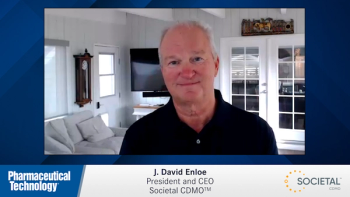
Big Pharma’s Shrinking Firepower for M&A Deals
Over the last two years, the gap between analysts’ estimates of big pharma sales and the global drug market forecast by IMS Health has widened significantly.
Over the last two years, the gap between analysts’ estimates of big pharma sales and the global drug market forecast by IMS Health has widened significantly. In 2011, the overall drug market saw growth that overtook big pharma by approximately $20 billion; it is anticipated that this gap will further widen to $50 billion in 2012 because of major brands falling off the patent cliff.
A recent report by Ernst & Young, Closing the gap? Big pharma’s growth challenge and implications for deals, projects that the growth gap will reach $100 billion by 2015. As a result, big pharma is under increased pressure to drive growth through mergers and acquisitions (M&A). There is, however, another obstacle standing in the way-the firepower gap. Ernst & Young defines firepower as a company’s capacity for conducting M&A deals.
“While the dynamics of the pharma industry remain fluid, the deal environment in 2013 and beyond will be more complex and competitive,” Glen Giovannetti, Ernst & Young global life sciences leader, said in a press statement.
Compared with other industry players, big pharma’s dealmaking capacity has taken a downward spiral in recent years due to “diminished resources and fiercer competition for attractive assets from rapidly growing big biotech and specialty pharma companies.”
The report pointed out that big pharma’s firepower shrunk by 23% between 2006 and 2012, whilst specialty pharma and big biotech companies have, on the other hand, experienced an increase in firepower, with revenues ranging from $1 billion to $20 billion in 2012. This lack of firepower means that there’s a risk of big pharma being bumped out of M&A deals.
So, what can big pharma do? Glen Giovannetti has rightly said that, “the finite resources of many big pharma companies and the need to make prudent acquisitions to address the immediate growth gap mean they will likely be even more selective about the targets they pursue.”
Ernst & Young’s report identifies several strategies for big pharma to consider:
- Companies will need to free up cash to build firepower, which can be achieved in deploying existing capitals more efficiently and investing in working capital projects that give immediate returns.
- To acquire growth to fill the gap, big pharma will need to find new sources of growth.
- It is important to make deals selectively and buy the right assets at the right price, especially in an environment of constrained resources and elevated premiums.
- Careful attention must be given to how well these deals are executed. Big pharma will need to plan in advance and develop an integration roadmap that enables growth goals to be realized.
- Companies will need to use creative deal structures to preserve firepower. With prices for the best assets escalating and firepower under constraint for many players, companies will have to factor in contingency-based payments and new forms of collaboration that reduce duplicative efforts.
From 2013 onwards, one can expect to see more bolt-on acquisitions, more divestitures and more offshore deals and emerging markets deals. With limited options to drive growth, big pharma needs transactions, for which firepower is required. And measures to boost and conserve firepower have never been more crucial.
Newsletter
Get the essential updates shaping the future of pharma manufacturing and compliance—subscribe today to Pharmaceutical Technology and never miss a breakthrough.


